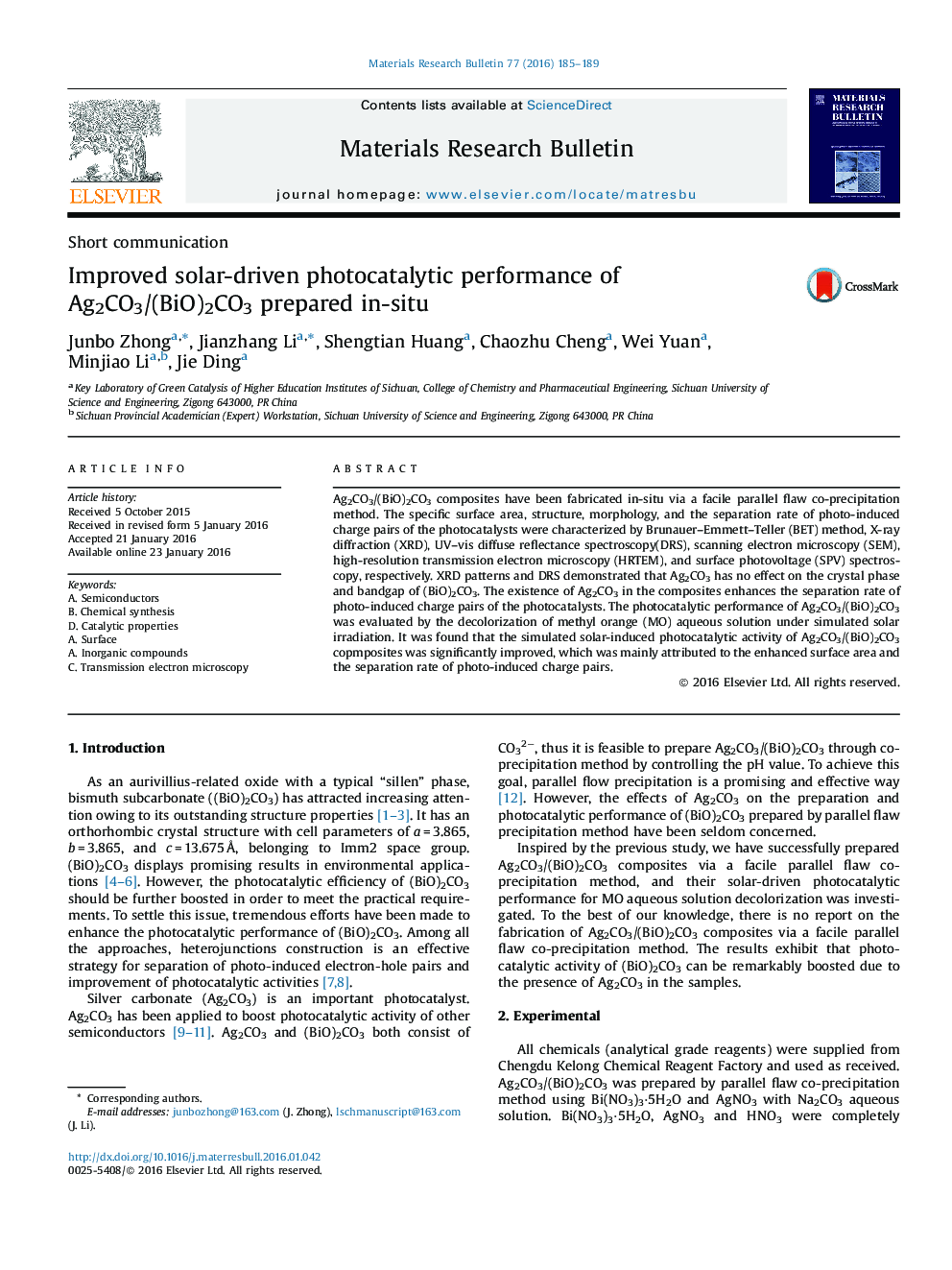| Article ID | Journal | Published Year | Pages | File Type |
|---|---|---|---|---|
| 1487461 | Materials Research Bulletin | 2016 | 5 Pages |
•Ag2CO3/(BiO)2CO3 photocatalysts were prepared in-situ.•The photo-induced charge separation rate has been greatly increased.•The photocatalytic activity has been greatly promoted.
Ag2CO3/(BiO)2CO3 composites have been fabricated in-situ via a facile parallel flaw co-precipitation method. The specific surface area, structure, morphology, and the separation rate of photo-induced charge pairs of the photocatalysts were characterized by Brunauer–Emmett–Teller (BET) method, X-ray diffraction (XRD), UV–vis diffuse reflectance spectroscopy(DRS), scanning electron microscopy (SEM), high-resolution transmission electron microscopy (HRTEM), and surface photovoltage (SPV) spectroscopy, respectively. XRD patterns and DRS demonstrated that Ag2CO3 has no effect on the crystal phase and bandgap of (BiO)2CO3. The existence of Ag2CO3 in the composites enhances the separation rate of photo-induced charge pairs of the photocatalysts. The photocatalytic performance of Ag2CO3/(BiO)2CO3 was evaluated by the decolorization of methyl orange (MO) aqueous solution under simulated solar irradiation. It was found that the simulated solar-induced photocatalytic activity of Ag2CO3/(BiO)2CO3 copmposites was significantly improved, which was mainly attributed to the enhanced surface area and the separation rate of photo-induced charge pairs.
Graphical abstractFigure optionsDownload full-size imageDownload as PowerPoint slide
